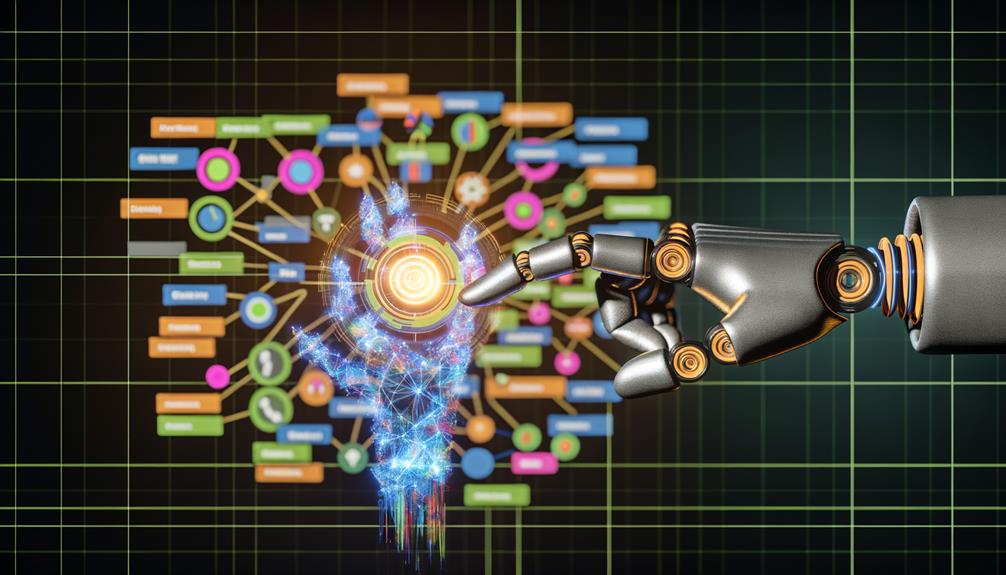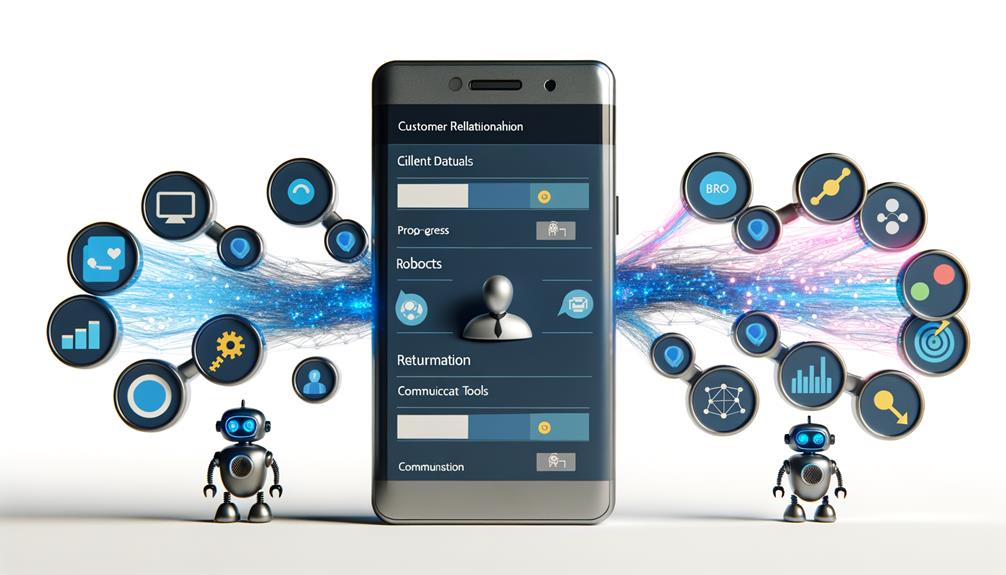In the domain of AI and CRM, data visualization techniques employ advanced algorithms to process and interpret unstructured customer data, converting it into visually intuitive charts. This not only increases efficiency but also enriches customer segmentation, engagement, and predictive analytics capabilities. AI empowers real-time insights, transforming complex data into actionable knowledge for informed decision-making. It's an innovative step in leveraging CRM data for personalized services, improved satisfaction, and profitable business intelligence. Exploring further into this landscape will offer profound insights into enhancing your data interpretation proficiency, fostering a data-driven strategy.
Understanding AI in Data Visualization
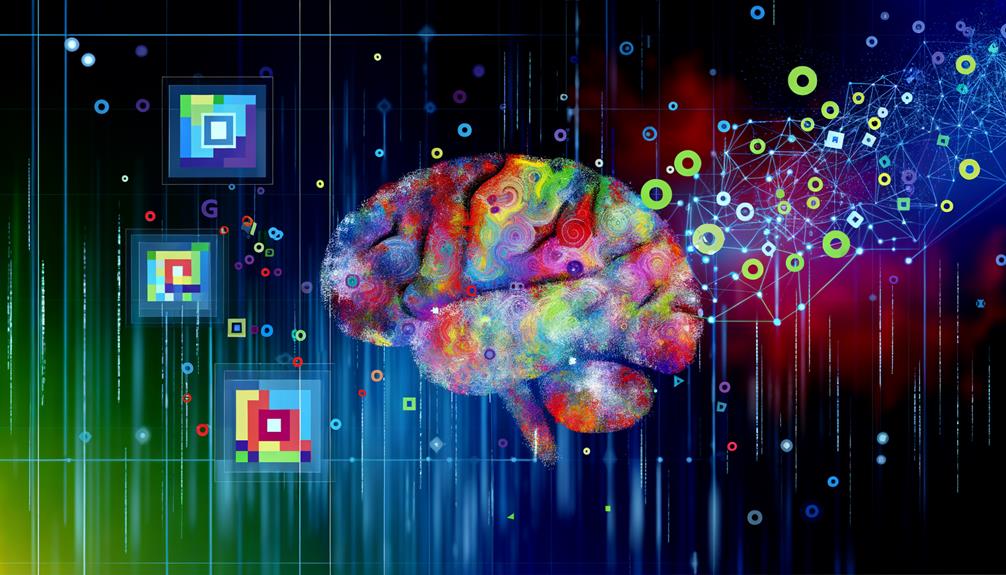
In your journey to understand AI's role in data visualization, it's essential to grasp how it processes unstructured data, such as that from social media feeds, using automated algorithms for error correction and data normalization. This consolidation of customer data into clean, usable formats is a key feature of AI in data visualization, vital for businesses seeking thorough, accurate insights.
Moreover, AI's ability to create complex visual representations like heat maps and network diagrams brings simplicity and clarity to your data. Interactive dashboards, powered by AI, afford real-time updates and exploration capabilities, transforming raw data into visually appealing, easily digestible formats. These tools, coupled with AI algorithms, generate automated insights from complex data sets, making data analysis a breeze. Through AI, data visualization techniques have certainly evolved, revolutionizing how businesses interpret and utilize data.
Benefits of AI-Powered Visualization
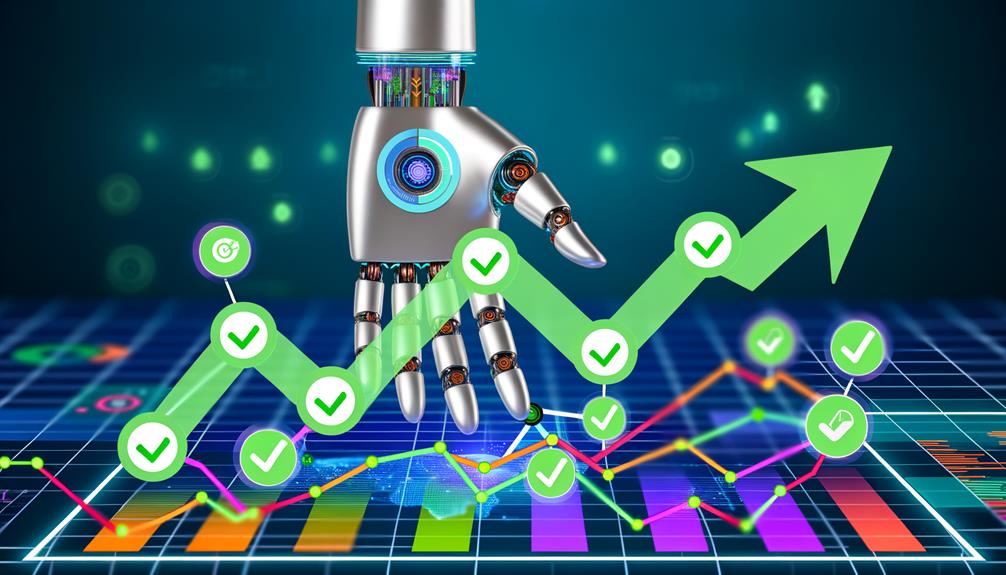
Consider the advantages of AI-powered visualization. Through enhancing data interpretation, it allows you to understand complex data sets more effectively, leading to more informed business decisions. Coupled with the benefits of predictive analytics and a streamlined decision-making process, AI visualization tools can greatly boost your company's efficiency and accuracy in decision-making.
Enhancing Data Interpretation
Harnessing the power of AI-driven visualization can revolutionize your data interpretation processes, transforming complex CRM datasets into intuitive, easy-to-read charts and graphs. AI data visualization tools simplify data analysis, enabling you to swiftly identify patterns and trends. These insights facilitate improved customer segmentation and engagement, thereby optimizing your marketing strategy.
- AI-enhanced data visualization enhances CRM data visualization by offering interactive tools that improve data accessibility and readability.
- Customizing dashboards with key performance indicators boosts the overall CRM usage potential.
- Advanced techniques spotlight trends, explore outliers, and provide a deeper understanding of customer data, revealing new sales opportunities.
Predictive Analytics Advantages
In addition to the benefits of AI-enhanced data visualization, let's explore how predictive analytics, another powerful aspect of AI, can amplify your CRM's efficiency. Utilizing historical data, predictive analytics leverages AI to forecast customer behavior and predict market trends. This proactive approach, enabled by AI-powered visualization tools, facilitates the identification of patterns and potential outcomes. This results in improved CRM efficiency by personalizing marketing strategies and customer interactions. Leveraging AI-driven insights from predictive analytics, customer segmentation becomes more precise, allowing for tailored experiences. The result? Increased customer satisfaction and retention. Moreover, the integration of AI and predictive analytics into CRM practices boosts profitability by ensuring targeted efforts align with customer needs and preferences.
Streamlined Decision-Making Process
Exploring the world of AI-powered visualization, you'll find a streamlined decision-making process at your fingertips, with tools that empower managers to locate timely information 28% more effectively, and enable companies to make decisions five times faster than their competitors. This efficiency in decision-making is just the tip of the iceberg.
- AI-powered tools foster collaboration across teams, breaking down silos and promoting data literacy, making complex datasets accessible and understandable to all.
- With real-time insights, you'll stay ahead of the curve, making informed decisions when they matter most.
- Automated tasks eliminate tedious manual work, freeing your time to focus on strategic initiatives.
In essence, data visualization harnesses the power of AI to improve decision-making accuracy, boost efficiency, and facilitate a more collaborative work environment.
Dynamic Data Dashboards Explained
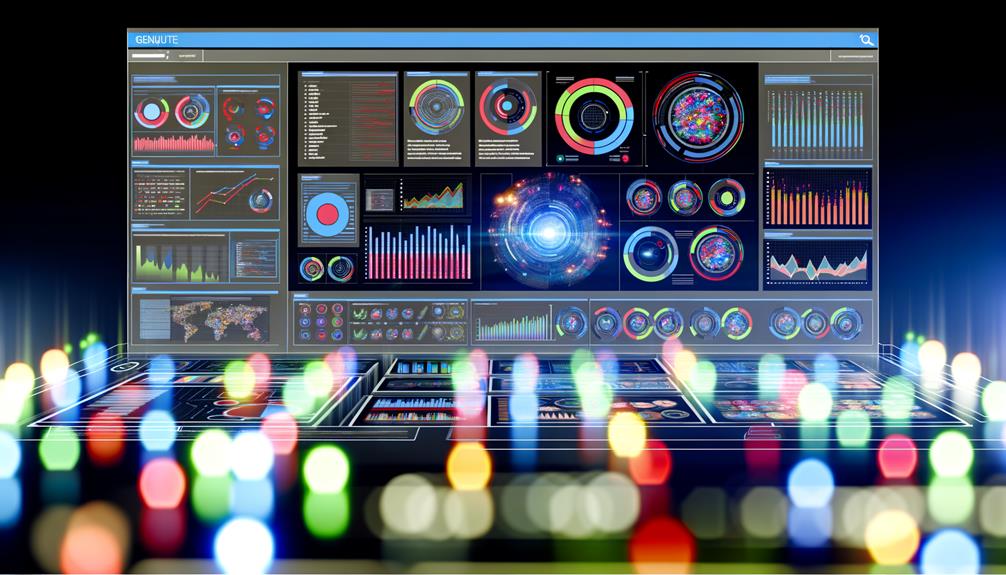
In the domain of data visualization, dynamic data dashboards stand out as they continuously evolve with new data, providing you with the most current insights. These dashboards recalibrate in real-time based on user interactions and changing information. This responsiveness guarantees you're always working with up-to-date, accurate data. Interactive features are a key component of dynamic dashboards. They offer personalized exploration capabilities, enabling you to investigate specific metrics and compare data from different periods. The result? Real-time insights that empower decision-making. To conclude, dynamic data dashboards are more than just visual displays. They're powerful, user-centered tools, adaptable to fast-changing situations, and designed to enhance your data comprehension.
Predictive Analytics and Forecasting

Consider the power of predictive analytics; by utilizing historical data and machine learning, you can forecast future customer behaviors. This technology enables you to anticipate trends, identify potential issues, and make informed decisions. With AI-driven predictive analytics implemented into your CRM, you can boost personalization, improve customer segmentation, and optimize your resource allocation for increased operational efficiency.
Understanding Predictive Analytics
Delving into predictive analytics, you'll find it's a practice that harnesses statistical algorithms and machine learning techniques to anticipate future trends and behaviors, based on past data. By analyzing historical data, predictive analytics enables you to spot patterns and trends, providing valuable insights for decision-making. Utilizing AI and CRM data visualization techniques, predictive analytics can transform raw data into understandable visuals, allowing for easier interpretation of complex data sets.
- Predictive analytics uses machine learning to decipher patterns in historical data, enabling accurate predictions of trends.
- It employs AI and CRM data visualization techniques to interpret data, allowing for effective analysis and strategic planning.
- By utilizing predictive analytics, businesses can anticipate customer needs, optimize marketing strategies, and make data-driven decisions.
Forecasting in Business
Harnessing the power of predictive analytics, you can use historical data to accurately forecast future business trends and outcomes. With predictive models, forecasting techniques can be integrated into Customer Relationship Management (CRM) systems to anticipate customer behavior and preferences. By analyzing past interactions and patterns, you can make data-driven decisions, improving resource allocation, marketing strategies, and customer segmentation. These predictive analytics tools not only enhance decision-making but also boost customer satisfaction. They allow you to anticipate the needs of your customers, tailor your services, and predict future sales. They're not just about predicting the future, they're about shaping it. So, invest in predictive analytics and forecasting techniques to make informed business decisions and stay ahead of the curve.
Improving CRM With AI
In today's data-driven world, utilizing AI in your CRM system can greatly enhance predictive analytics and forecasting, enabling you to accurately anticipate customer behavior and trends based on historical data. AI's power lies in its ability to analyze enormous datasets, identifying patterns that improve customer segmentation and optimize marketing campaigns.
- AI-powered forecasting models enable proactive customer engagement through precise anticipation of customer needs and preferences.
- Leveraging AI in CRM provides valuable insights for strategic planning, enhancing decision-making processes.
- AI's role in predictive analytics helps in fine-tuning customer relationship management by accurately predicting customer actions.
Through data visualization, AI brings clarity to complex CRM data, ultimately aiding in the development of effective marketing strategies and customer relationship management. Therefore, AI is an essential tool for elevating your CRM system.
Real-Time Insights Through AI
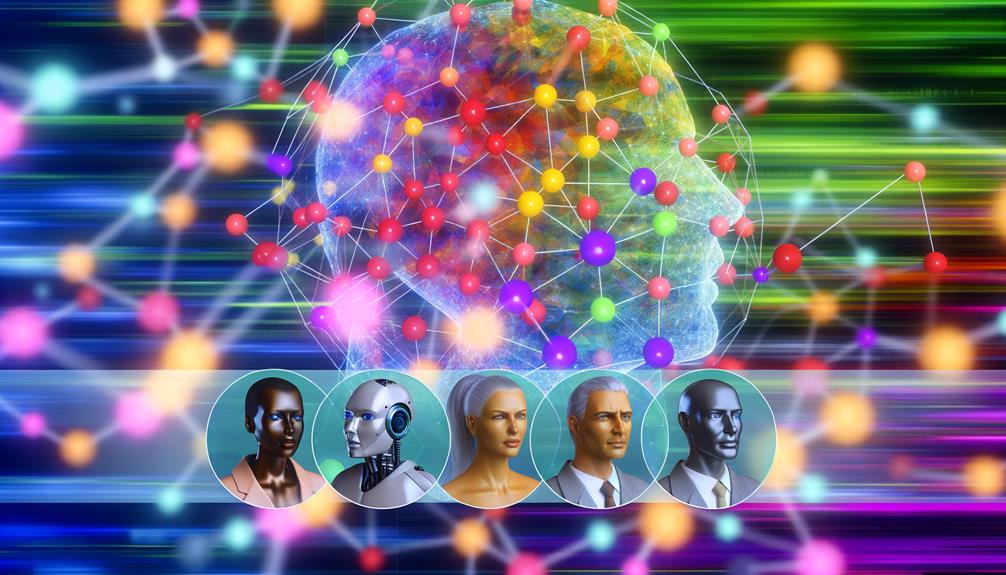
Have you considered how AI-driven data visualization can provide immediate insights into your customer behavior and trends? Analytics powered by AI algorithms can process real-time data, identifying patterns and anomalies instantly. This helps you gain a competitive edge, as you're able to analyze customer interactions as they occur. Interactive dashboards update in real time, aiding quick decision-making based on current data. Social media analytics, too, harness AI tools to display real-time trends, demographics, and sentiments. You're not just looking at static, past data but what's happening now. Such insights can help you anticipate customer needs, respond to market shifts, and align your business strategies effectively. In essence, real-time insights through AI empower you to understand your customer better and stay ahead.
Business Intelligence Enhancement
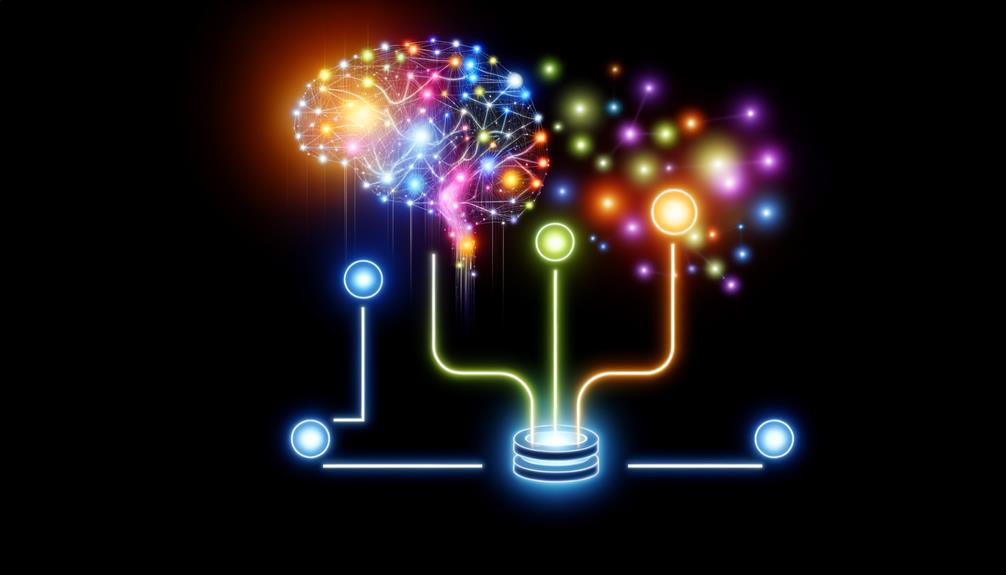
Through the lens of AI-driven data visualization, your business intelligence can be greatly enhanced, transforming complex data into actionable insights that fuel informed decision-making. Advanced visualization tools, powered by AI, simplify the presentation of data, enabling you to understand patterns, trends and correlations that might go unnoticed in text-based data.
Here are three pivotal ways AI and CRM integration can enhance your business intelligence:
- AI-powered dashboards enhance collaboration and data literacy within your organization.
- Predictive analytics, facilitated by enhanced data visualization, optimize operational efficiency.
- Proactive risk management strategies are made possible by intelligently interpreting data.
Challenges in AI Visual Data

While harnessing the power of AI in data visualization can revolutionize your understanding of complex datasets, it's not without its challenges, particularly when dealing with unstructured data sources like social media feeds. Making sense of such unstructured data for AI visual data processing requires cleaning and preprocessing of raw data. This is an essential and often laborious step, ensuring the quality and relevance of visual data analysis. AI algorithms play a key role here, automating tasks such as error correction and data normalization. The requirements for data sources vary depending on the application, ranging from structured databases to unstructured text, images, videos, and audio. Despite these hurdles, AI tools transform complex data into visually appealing formats, simplifying interpretation of vast amounts of information.
Practical AI Applications in CRM
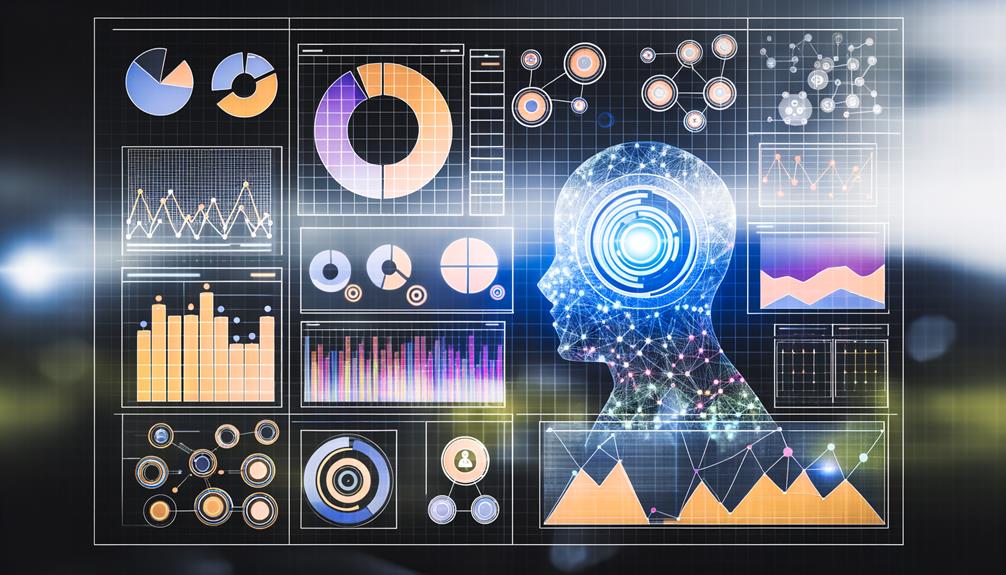
In the domain of Customer Relationship Management (CRM), practical AI applications are transforming the way businesses interact with their customers, enabling personalized interactions through mechanisms like chatbots and tailored email campaigns. AI-driven data from these applications allow businesses to better anticipate customer needs, leading to improved customer satisfaction.
Key areas where AI practical applications shine in CRM are:
- *Predictive analytics*: By using machine learning techniques, AI can forecast customer behavior, allowing businesses to proactively strategize their engagement.
- *Customer segmentation*: AI tools can segment customers effectively, enhancing targeted marketing and service offerings.
- *Personalized Interactions*: AI can automate personalized interactions, leading to increased customer satisfaction and retention.
Training for AI and Data Science

Mastering AI and data science isn't just about understanding complex algorithms; it's about learning to navigate tools like Python, R, and SQL for data manipulation and modeling, and grasping statistical analysis and data visualization techniques to make sense of the vast amount of data. Real-world case studies and hands-on projects are essential for practical application of these concepts.
Upskilling in AI and data science is continuous, especially with the rapid technology evolution. Platforms like Coursera, Udemy, and DataCamp offer beginner to advanced courses on these subjects.
Here's a quick guide:
| Learning Platform | Course Focus | Level |
|---|---|---|
| Coursera | Machine Learning Algorithms | Advanced |
| Udemy | Python for Data Science | Beginner |
| DataCamp | Data Visualization | Intermediate |
Stay updated, keep learning.
